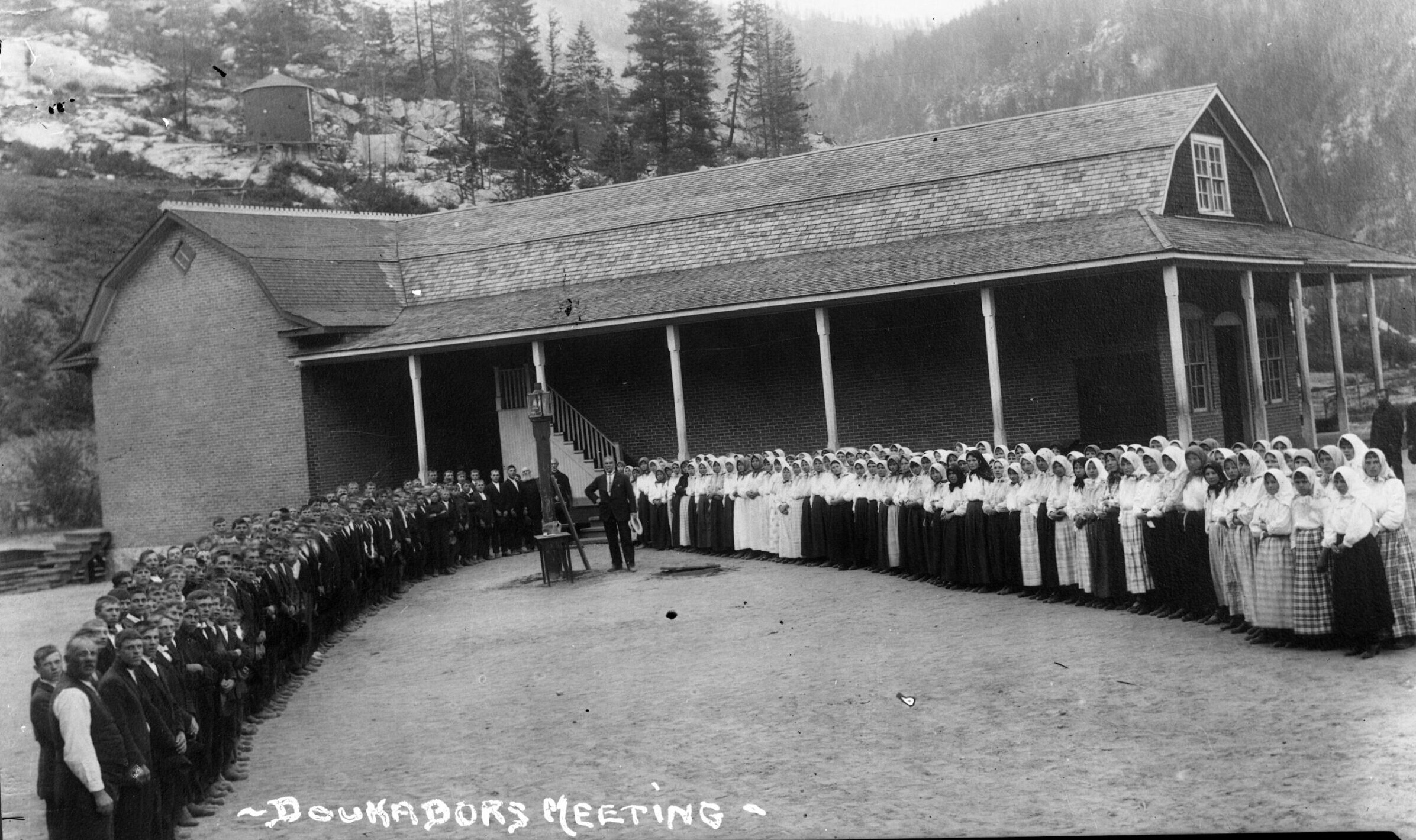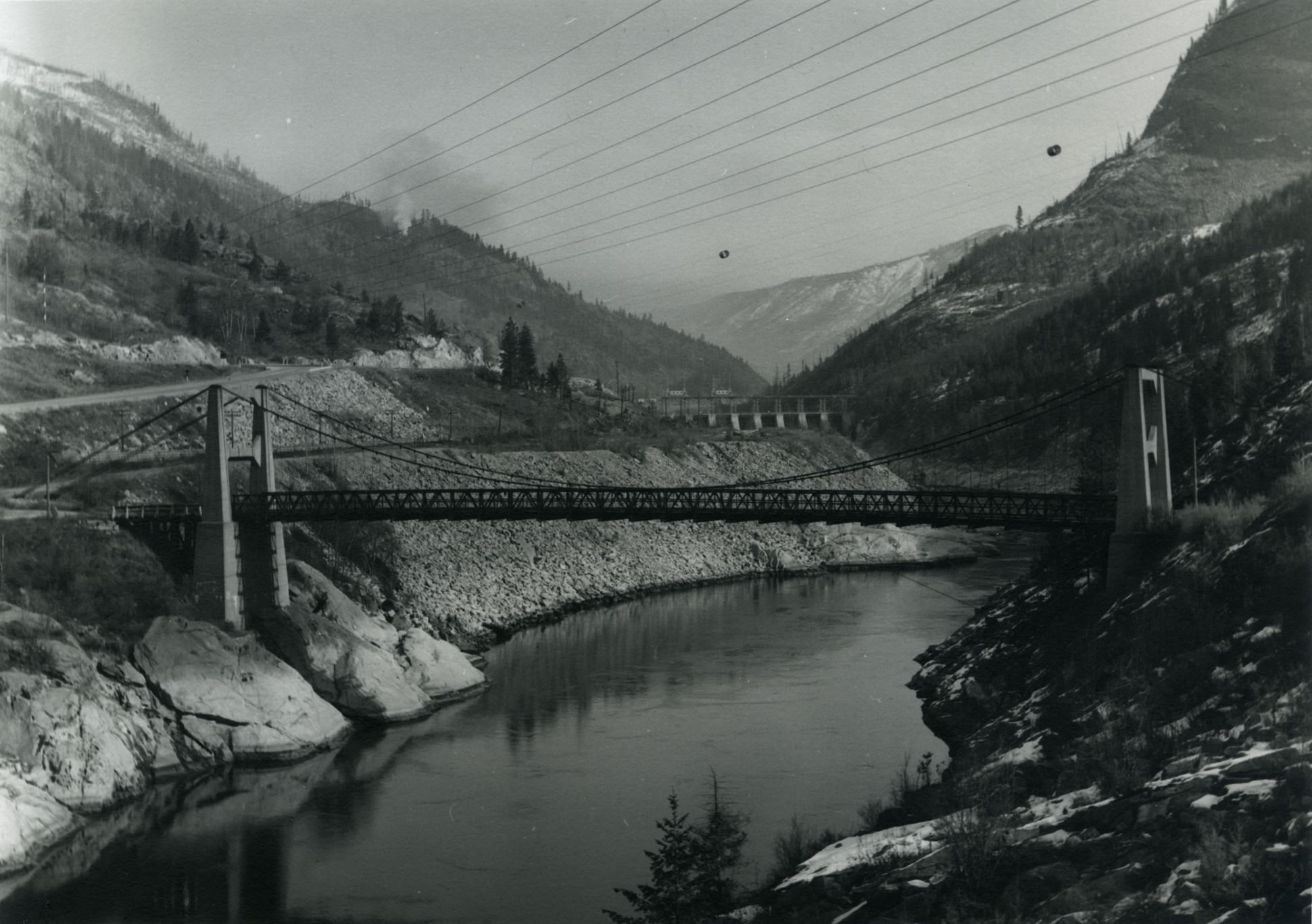From 1908 to 1912, around 5,000 Doukhobors migrated to the Kootenay region of B.C., driven by an unwavering determination to establish “the Kingdom of God on earth” once and for all. 1 Settling upon 14,000 acres of land, they embarked on one of the greatest experiments in communal living in the history of B.C. 2
The heart of their community was built in Brilliant, a settlement nestled at the confluence of the Kootenay and Columbia rivers, one of the last remaining homes and burial sites of the Sinixt. They also established permanent settlements in Grand Forks, Glade and Pass Creek. 3
These settlements became vibrant centers of industry and cultivation as the Doukhobors developed orchards, operated sawmills, ran a brick-making factory, owned a jam factory, and much more.
THEIR EXPERIMENT IN COMMUNAL LIVING AND GENERAL CUSTOMS
The Doukhobors, in their communal way of life, embodied a sense of simplicity and collectivism. Their system, “reduced to its simplest elements,” was “that the people contribute[d] their toil and in return receive[d] from a common fund their food and clothing.” Meanwhile, the surplus was passed “into the direct and… sole control of Mr. Verigin,” who acted “through his business managers.” 4
Such was the depth of their commitment to communal rights that even individuals like Michael Cazakoff, “the manager, who could command a large salary in any similar position elsewhere,” adhered to the same unpretentious lifestyle. 4 While certain people within the community held roles of more significance, poverty and crime were unknown. Ultimately, “no Doukhobor ever suffered for want of food or clothing,” although controversies arose at times regarding their access to medical care and services. 5
They lived by the slogan “Toil and a Peaceful Life.” Ultimately, the Doukhobors viewed toil not as a burden but as a pathway to peace. It was through their diligent efforts and shared commitment to communal living that they sought to embody the teachings of Jesus Christ. Their favourite designation was “Children of the Soil,” and no one in their community was ever idle or without work. 6
In their quest for a peaceful life, the Doukhobors believed that true fulfillment and contentment could be found not in personal achievements or material possessions but in the collective embrace of a shared journey toward a harmonious existence. They were, and many are to this day, pacifists and vegetarians and sought to do their best not to contribute to the suffering of the world in any way.
The Doukhobors did not drink alcohol, smoke, or chew tobacco and were, by almost all reports, “moral, industrious, truthful and honest people.” 7

A Doukhobor communal meeting during the 1930s.
THEIR ECONOMIC VENTURES AND INDUSTRY
The Doukhobors found themselves in just as much of a collective business endeavour as a communal living experiment. Since they bought private land and found themselves in a significant amount of debt, the community had to generate income to pay off the loans.
While the work required of them was by no means easy, “the Doukhobors… demonstrated that, under the communal system, they [could] clear and cultivate land, develop production, and amass wealth at a far greater rate than [was] possible on any individual system.” 8 The result of this was numerous successful businesses and projects that were solely powered by collective labour.
Perhaps most notable of all was the Doukhobors’ contributions to the fruit economy. Despite having very little experience in fruit growing, their orchards were considered some of the “cleanest, the best-kept, and the heaviest-cropped of any in the district.” 9 The Doukhobors also ran sawmills on their properties, primarily to convert timber into building materials for their own use.
Furthermore, they operated a successful brick-making factory in Grand Forks, producing high-quality bricks that were in demand and used for various construction projects, including “new Government Buildings at Grand Forks.” 2
Another significant business venture undertaken by the Doukhobors was the ownership of a jam factory in Nelson. They acquired the factory from the Kootenay Preserving Company and turned it into a cherished asset revered for its delectable jams. They also constructed a “reservoir capable of holding 1,000,000 gallons of water,” intended for “domestic purposes and irrigation. 9
Finally, in 1913, they built what is known as the Brilliant Suspension Bridge. It connected their settlements on either side of the Kootenay River and was “a vital transportation link in the area for over fifty years.” 10 It made the journey from Nelson to Trail a considerably more plausible one.

The Brilliant Suspension Bridge
- Evalenko, The Message of the Doukhobors, 53.
- Blakemore, Royal Commission, 33.
- Blakemore, Royal Commission, 31.
- Blakemore, Royal Commission, 41.
- Blakemore, Royal Commission, 51.
- Blakemore, Royal Commission, 49.
- Blakemore, Royal Commission, 44.
- Blakemore, Royal Commission, 38.
- Blakemore, Royal Commission, 32.
- Parks Canada, “Doukhobor Suspension Bridge.”
